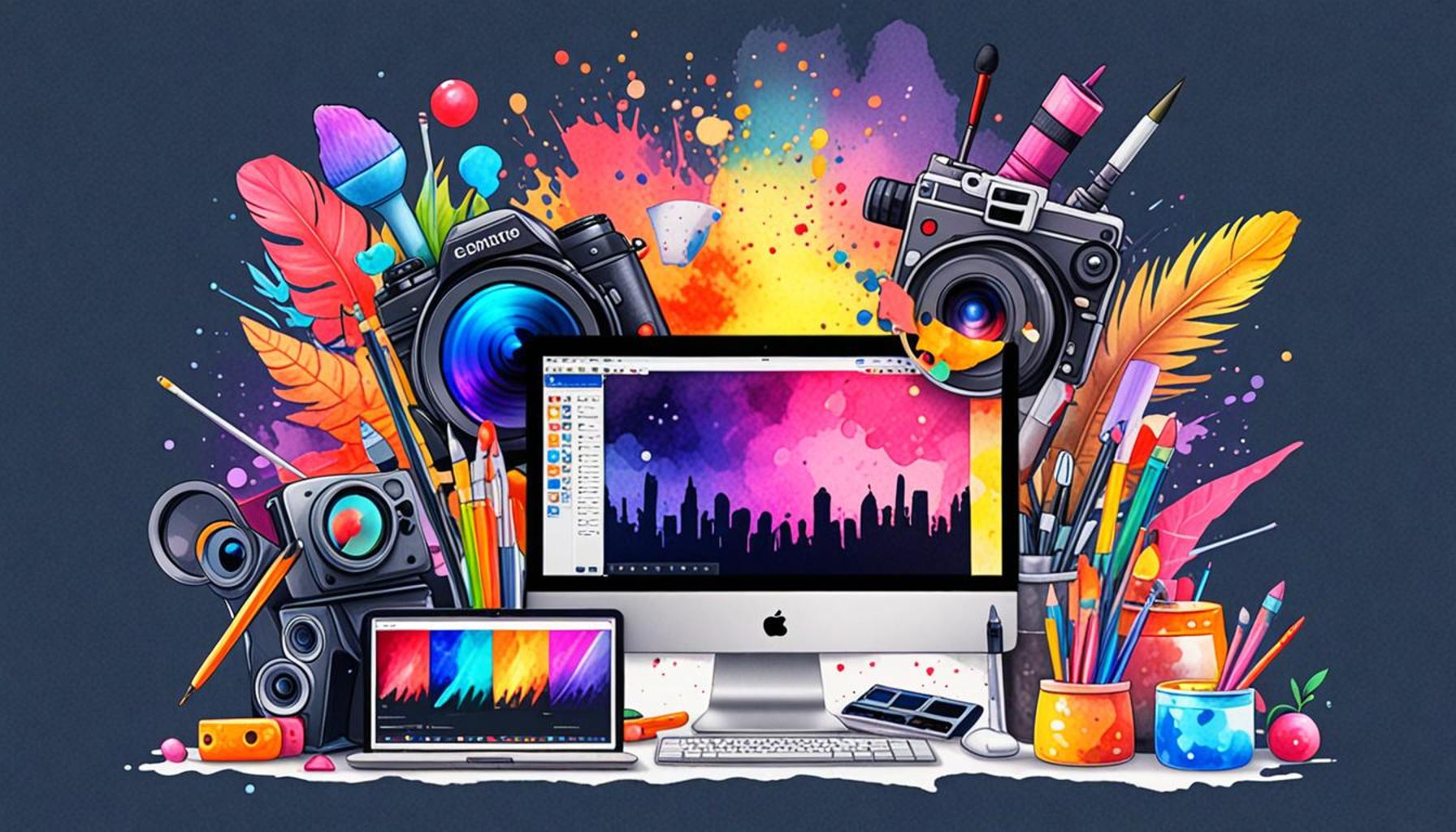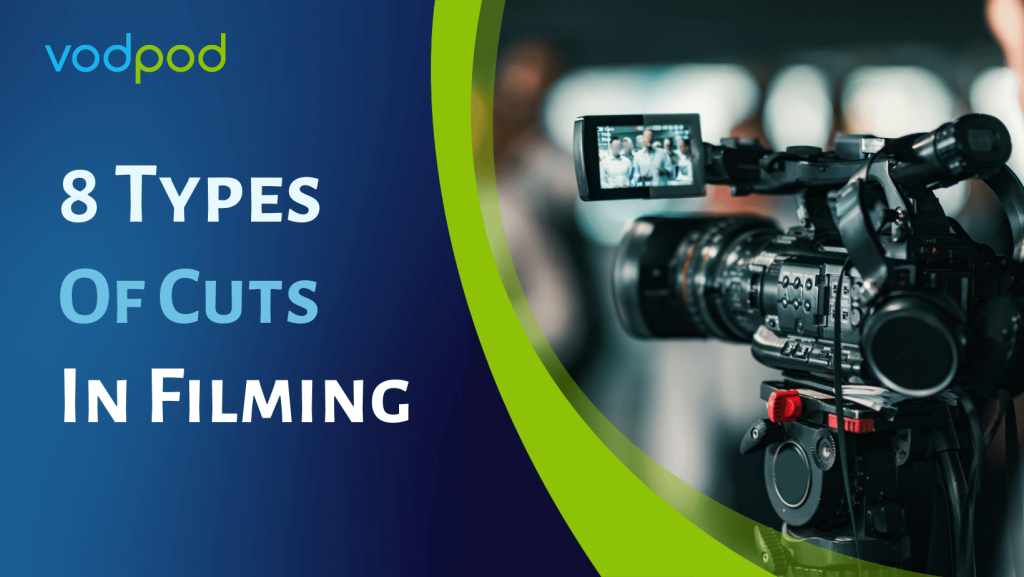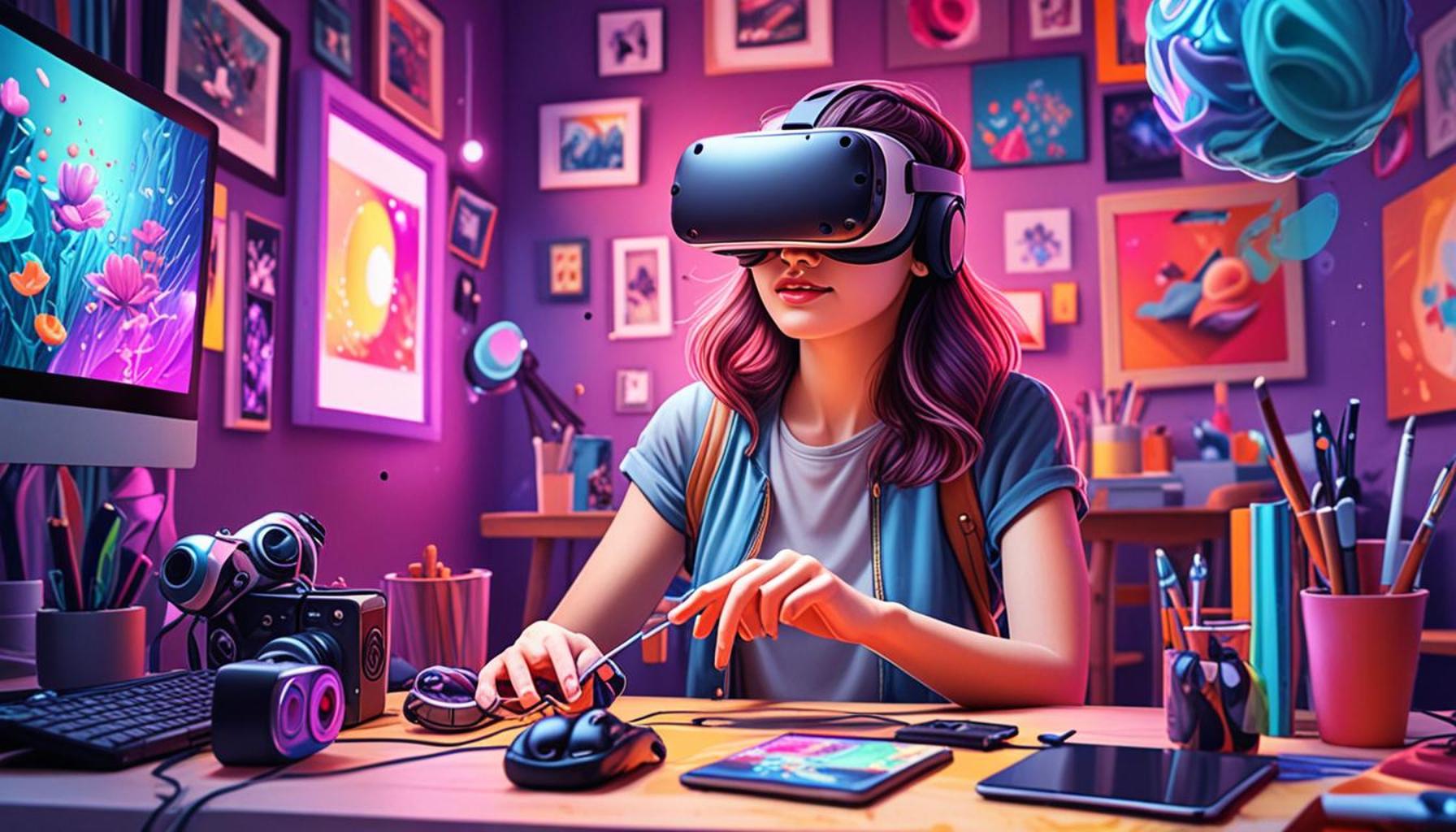The Evolution of Video Editing Tools for Content Creators

The Evolution of Video Editing
Video editing has undergone a remarkable transformation over the past few decades, fundamentally reshaping how content creators—from professional filmmakers to social media influencers—produce and share their work. The development of innovative tools and technologies has democratized the art of video making, allowing virtually anyone to express their creativity and connect with audiences around the globe.
Film Editing Beginnings
The journey of video editing commenced with traditional film editing, where painstaking manual processes were the norm. Editors would physically cut and splice film reels together, a labor-intensive task that required precision and a keen eye for detail. This era, characterized by the tangible handling of film strips, was emblematic of the craftsmanship involved in filmmaking. Notable figures like Thelma Schoonmaker and Walter Murch emerged as key players in this field, with Murch famously working on films such as “Apocalypse Now” using this painstaking and meticulous approach.
Introduction of Non-Linear Editing (NLE)
The 1990s heralded the arrival of non-linear editing (NLE) systems, significantly transforming the editing landscape. With software like Avid Media Composer, editors could now access any part of their footage instantly and manipulate it in ways previously thought impossible. NLE systems provided a flexible framework for storytelling, paving the way for increased creativity and experimentation. The introduction of these systems marked a critical milestone that eliminated the linear constraints of traditional editing.
Impact of Affordable Software
As technology progressed, video editing became more accessible to the masses thanks to affordable software options. Programs like iMovie, which are user-friendly and equipped with intuitive features, empowered everyday users to create polished videos without requiring extensive training. Adobe Premiere Elements also opened the doors to more sophisticated editing tools, making advanced techniques like transitions and effects available to beginners. This shift has given rise to a new generation of content creators, contributing to the growing landscape of online platforms like YouTube and TikTok.
Cloud-based Solutions
In recent years, cloud-based editing solutions such as WeVideo and Adobe Premiere Rush have further transformed how creators engage with video production. These platforms facilitate collaborative editing and offer users the flexibility to work on projects from anywhere, fostering a more dynamic and interconnected creative process. Such accessibility is particularly beneficial for teams spread across different locations, enabling seamless contributions and real-time feedback.

Empowerment through Advanced Features
Today’s content creators enjoy a suite of powerful features that elevate their storytelling and production quality. Features such as simple drag-and-drop interfaces cater to novice editors, while advanced options like color grading and audio mixing tools are available for seasoned professionals. Moreover, with the rise of smartphones, even casual creators can produce cinematic-level videos directly from their devices, breaking down barriers to high-quality content creation. Popular apps such as TikTok and Instagram Reels have fueled this trend, encouraging millions to explore their creative potential.
This exploration of advancements in video editing highlights the industry’s evolution and underscores the diverse tools available for both novices and professionals. As technology continues to evolve, the possibilities for storytelling through video remain boundless, inviting creators of all backgrounds to share their unique perspectives with a global audience.
DIVE DEEPER: Click here to discover the blend of yoga and creativity
Emergence of Mobile Editing and Innovation
As the landscape of video editing tools continues to evolve, mobile editing solutions have emerged as game-changers, particularly for the newer generation of content creators. With the advent of smartphones capable of capturing high-definition video, it became clear that the tools for editing must also adapt. Apps such as InShot, Kinemaster, and PowerDirector are tailored for mobile users, allowing them to edit videos with a variety of features right from their devices. These applications offer user-friendly interfaces, making video production accessible to individuals who may never have touched a desktop editing suite.
Key Features of Mobile Editing Apps
Mobile video editing apps integrate powerful features to meet the demands of on-the-go creators. Here are some of the standout functionalities:
- Multi-layer Editing: This enables users to combine multiple video tracks, images, and sound layers, enhancing the complexity of their projects.
- Instant Sharing: Direct upload options to social media platforms facilitate immediate engagement with audiences, making the editing process virtually seamless.
- Templates and Filters: Pre-made templates and artistic filters allow for quick customization, helping creators maintain a unique aesthetic while saving time.
- Audio Syncing and Mixing: The ability to edit audio tracks simultaneously ensures that both visuals and sound quality are optimized during the editing process.
The accessibility of these mobile apps means that anyone can become a video creator with just a smartphone and an internet connection. According to a report by Statista, over 80% of internet users in the United States engage with video content regularly, emphasizing the increasing demand for such easily accessible editing tools. This shift not only represents a change in how videos are produced but also influences the type of content that creators share, often leading to shorter, more engaging formats suited for platforms like Instagram and TikTok.
The Impact of Artificial Intelligence
The latest technological advancement in video editing comes from the integration of artificial intelligence (AI). Tools utilizing AI—such as Adobe Sensei and Magisto—provide groundbreaking solutions that enhance the editing experience. AI-driven features can analyze video footage, suggest edits, and even help creators choose the best moments to highlight, effectively streamlining the editing process. Some of the AI capabilities include:
- Automated Editing: Algorithms can automatically edit clips according to pre-defined styles, saving time and effort.
- Smart Tagging: AI can identify and tag significant elements within the footage, allowing for swift retrieval during editing sessions.
- Face Recognition: This feature can help in organizing footage based on the people appearing in the video, enhancing personalization.
This intersection of technology and creativity means that opportunities for content creators are expanding at an unprecedented rate. As tools become more sophisticated, the barrier to entry into professional-quality content production continues to diminish. Creators are empowered to experiment, push boundaries, and redefine what is possible in the realm of video storytelling, ultimately engaging and captivating their audiences worldwide.
The Evolution of Video Editing Tools for Content Creators
As video content continues to dominate the digital landscape, the tools employed by creators have undergone remarkable transformations. The shift from bulky editing software to user-friendly, cloud-based applications has made remarkable strides in empowering creators to express their visions with unprecedented ease. One significant leap was the introduction of real-time collaboration features in many video editing applications, reflecting a trend toward teamwork and collective brainstorming. This functionality enables multiple creators, regardless of geographical constraints, to work simultaneously on projects, enhancing creativity and productivity. Moreover, the integration of artificial intelligence in video editing tools has opened up innovative possibilities. AI-driven features like automatic video clipping, smart editing suggestions, and even automated color correction have streamlined the editing process, allowing creators to focus more on storytelling rather than technical adjustments. The rise of mobile editing applications also reflects the changing habits of content creators. With powerful editing capabilities at their fingertips, creators now have the flexibility to draft, edit, and share videos instantly, catering to the fast-paced consumption patterns of today’s audience. Tools like these encourage spontaneous creativity, which resonates strongly in social media environments.To illustrate just how far video editing technology has evolved, let’s explore a concise comparison of the advantages offered by various popular tools available today:
| Feature | Benefits |
|---|---|
| Real-Time Collaboration | Provides flexibility for teams to co-create and enhance projects from different locations. |
| AI-Powered Editing Tools | Automates tedious editing tasks, allowing creators to save time and concentrate on creativity. |
| Mobile Editing Apps | Enables on-the-go editing, transforming spontaneous moments into sharable content. |
These innovations not only simplify the editing process but also provide creators with the tools to push the boundaries of their content, offering a richer experience for audiences. The evolution of video editing tools continues to shape the landscape of content creation, making it essential for creators to stay updated with the latest technologies.
DISCOVER MORE: Click here to learn about jewelry making as a creative exercise
Transformative Features of Desktop Editing Software
While mobile editing tools have democratized video production, desktop software continues to play a vital role in the evolution of video editing for serious content creators. Programs like Adobe Premiere Pro, Final Cut Pro, and DaVinci Resolve have long been industry standards, offering features that empower professionals to create high-quality cinematic experiences. These desktop tools encompass a range of functionalities that cater to both budding enthusiasts and seasoned filmmakers.
Enhanced Performance and Precision
One of the primary advantages of desktop video editing software is the enhanced performance capabilities. With powerful processors and ample RAM, these platforms can handle complex projects that require real-time rendering and high-resolution editing without lag. Features that have defined the market include:
- Keyframe Animation: Allows users to manually control changes in a video sequence, giving it a polished, professional look.
- Color Grading: Advanced color correction tools enable creators to achieve stunning visual consistency and mood, crucial for storytelling.
- Professional Audio Mixing: Comprehensive audio tools let users fine-tune soundtracks, voiceovers, and effects for superior auditory experiences.
Moreover, as the demand for 4K and 8K video content grows, the ability of desktop software to support high-resolution workflows is proving invaluable. A report by Wyzowl indicates that over 90% of marketers now consider video an essential part of their strategies, highlighting the need for more advanced editing solutions that cater to the quality expectations of audiences.
Collaboration and Cloud-Based Editing
The rise of cloud-based collaboration tools has further transformed the landscape of video editing. Platforms like Frame.io and Avid Media Composer facilitate teamwork by allowing multiple users to access, edit, and comment on projects from anywhere in the world. This shift speaks to the increasingly collaborative nature of content creation, particularly in the context of remote work. Key benefits include:
- Real-Time Feedback: Creators can receive instant critiques and suggestions, which can expedite project timelines significantly.
- Version Control: Keeping track of changes in a project simplifies the collaborative workflow, reducing errors across various edits.
- Accessible from Any Device: Cloud editing means creators are no longer tied to a specific machine, which broadens the possibilities for on-the-go modifications.
This integration of cloud technology alongside desktop editing has made it easier for teams and creators to work together, regardless of geographical boundaries, further exemplifying the evolution and sophistication of video editing tools. As digital content continues to saturate the media landscape, reliable and advanced editing tools are critical for creators striving to stand out in a crowded digital space.
Emerging Trends Shaping the Future
The landscape of video editing tools is constantly shifting, driven by factors such as technological advancements and evolving consumer preferences. Trends like VR and AR editing, along with the increasing incorporation of machine learning algorithms, promise to redefine video production in the coming years. For instance, virtual reality editing tools allow creators to build immersive experiences that engage audiences on an entirely different level. As these technologies become more mainstream, the creative potential for video storytelling expands exponentially.
With the evolution of video editing tools—ranging from mobile applications for casual users to sophisticated desktop software for professionals—the resources available to content creators are more diverse than ever. The integration of collaborative cloud solutions and advancements in AI signify that the journey of video editing is far from over, with potential innovations waiting just around the corner.
DON’T MISS OUT: Click here to discover exciting outdoor activities
Conclusion
As we’ve explored the evolution of video editing tools throughout this article, it becomes clear that the journey from rudimentary editing methods to advanced, feature-rich software has dramatically transformed the landscape for content creators. The accessibility offered by mobile editing apps has empowered a generation of budding filmmakers, enabling anyone with a smartphone to enter the world of video production.
Meanwhile, powerful desktop software remains essential for professionals seeking to push the boundaries of creativity and technicality in their projects. With capabilities tailored to handle intricate edits and high-definition content, tools like Adobe Premiere Pro and Final Cut Pro continue to set the industry standard. This evolution also embodies a shift towards collaboration, as cloud-based solutions allow teams to work seamlessly across distances, fostering a creative environment that is more interconnected than ever before.
The emerging trends in VR, AR, and AI technologies are setting the stage for the next wave in video editing innovation, enabling creators to craft immersive experiences that captivate audiences in dynamic ways. As these tools advance and audience expectations evolve, the realm of video editing is bound to become increasingly immersive and exciting.
In summary, the future of video editing appears bright, teeming with possibilities that may redefine storytelling and viewer engagement. For content creators, adapting to these ongoing changes will not only enhance their skill set but will also enrich the viewing experiences they deliver. The journey of video editing tools is far from complete, and those willing to explore will find a plethora of opportunities ahead.


